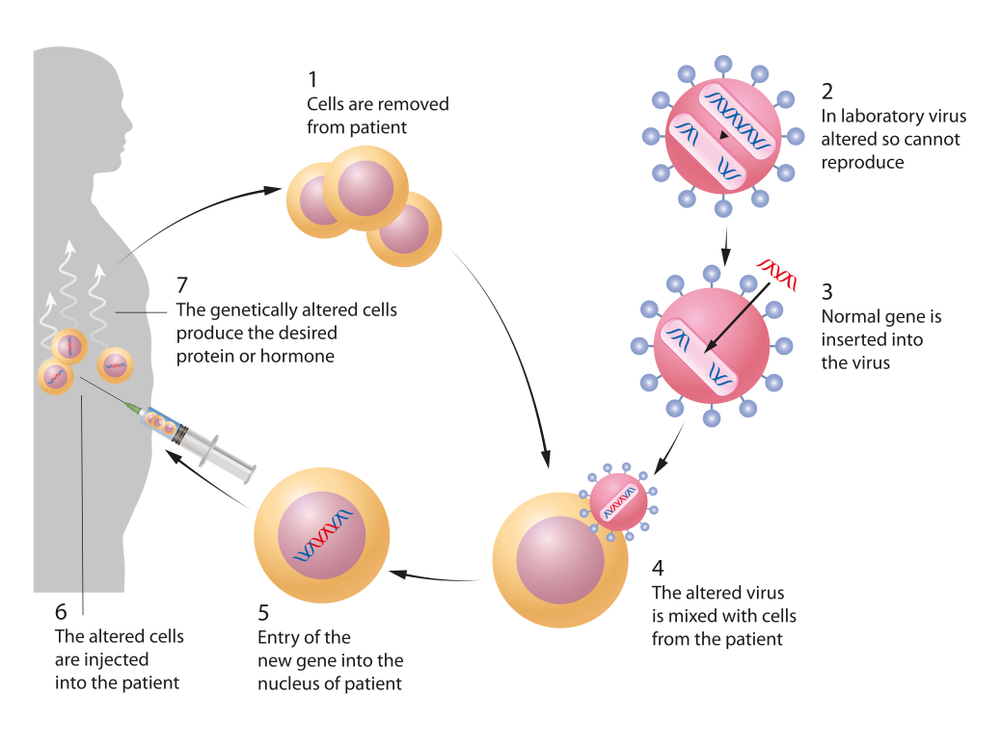 Moving from the laboratory to the clinic, numerous treatments for uncommon neurological disorders represent the most significant trend in the development of gene therapy.
Moving from the laboratory to the clinic, numerous treatments for uncommon neurological disorders represent the most significant trend in the development of gene therapy.
Gene therapy, once a realm of scientific curiosity, has become a beacon of hope for those grappling with rare neurological diseases 1. The journey commenced over 40 years ago2, and the FDA’s approval in 2017 ushered in a new era, attracting investors and drug companies eager to tap into its transformative power 3. This article delves into the evolving landscape of gene therapy, with a specific focus on its application in treating rare brain diseases, exploring breakthroughs, challenges, and the economic viability of this groundbreaking medical frontier.
Rare Neurological Diseases: A Turning Point

Gene therapy has recently demonstrated success in treating rare monogenic neurological diseases. FDA-approved treatments for spinal muscular atrophy, metachromatic leukodystrophy, cerebral adrenoleukodystrophy, and duchenne muscular dystrophy underscore the technology’s capability to address once untreatable disorders 4. The focus now shifts to promising gene therapies targeting monogenic brain disorders, particularly lysosomal storage diseases, where enzyme deficiencies have historically posed challenges 4.

Current research concentrates on lysosomal storage diseases, characterized by the abnormal buildup of toxic materials due to enzyme deficiencies. Emerging gene therapies aim to overcome the limitations of traditional treatments like enzyme replacement therapy 5 (gene therapies like Zolgensma, Hemgenix, and Zynteglo), offering longer therapeutic benefits. Phase 1/2 trials 6 targeting Tay-Sachs disease showcase early safety and proof-of-concept, instilling hope for patients grappling with devastating conditions.
Innovative Approaches to Known Disorders
Extending beyond rare diseases, gene therapy explores treatments for prevalent central nervous system conditions like Alzheimer’s, Parkinson’s, and epilepsy. Unlike monogenic disorders, these conditions lack obvious causative gene mutations. Innovative approaches focus on delivering essential components like dopamine for Parkinson’s or addressing increased network excitability in focal epilepsies. Overcoming challenges in crossing the blood-brain barrier remains a key focus, driving scientists to develop novel viral vectors and delivery routes.
The multifaceted nature of gene therapy development demands unique strategies and interdisciplinary collaboration. Overcoming challenges in trial enrollment, manufacturing, transportation logistics, and ensuring safety and efficacy assays is crucial. Navigating uncharted territories, especially in addressing the complexities of the blood-brain barrier, underscores the need for innovation and collaboration to meet the diverse needs of patients eagerly awaiting groundbreaking solutions.
The Commercial Landscape: Gene Therapy for Common Brain Disorders
While clinical development progresses for rare monogenic neurological diseases, the spotlight shifts to more common central nervous conditions like Alzheimer’s, Parkinson’s, and epilepsy. Challenges persist in crossing the blood-brain barrier, prompting scientists to explore new viral vector technologies and delivery routes. As gene therapy ventures into treating prevalent neurological disorders, the industry faces hurdles in trial enrollment, manufacturing, and safety assurance.
The economic feasibility of gene therapy raises pertinent questions, considering the complexities and costs associated with development. Despite their lower prevalence, allocating resources to rare diseases proves crucial in addressing the physical and mental toll of these conditions. The systematic cost of care for rare disease patients, often up to five times greater, highlights the need for continued investment in gene therapies.
Why Are Rare Diseases Overlooked?
Unique features of rare diseases, including delayed or incorrect diagnoses due to limited frequency and fewer patients for clinical studies, contribute to their oversight. The Orphan Drug Act, enacted in the 1980s, aimed to address this gap by providing incentives for investment in rare disease development. Despite progress, challenges persist, emphasizing the need for ongoing support and attention to rare diseases.
The promising trajectory of gene therapy for rare diseases is evident in its potential to offer curative one-time treatments. Zolgensma, Hemgenix, and Zynteglo are examples, commanding high upfront costs but proving cost-effective compared to ongoing treatments. Gene therapy’s capacity to address monogenic causes makes it a beacon of hope for patients with rare diseases, offering potential cures rather than symptomatic relief.
Challenges in Gene Therapy
While gene therapy shows immense promise, challenges persist. Viral vectors, immune system responses, and potential unintended consequences pose hurdles in developing durable treatments. Addressing disease mechanisms, manufacturing, quality control, and navigating regulatory and ethical considerations underscore the need for careful evaluation and ongoing research.
Final Diagnosis
Gene therapy emerges as a transformative solution, particularly for rare diseases where monogenic causes predominate. Its potential to repair underlying genetic damage and offer long-term, potentially curative treatments sets it apart. With advancements in gene sequencing and a growing understanding of disease mechanisms, gene therapy holds promise as a valuable tool in the medical arsenal, opening avenues for effective treatments and cures.
Conclusion
Gene therapy has shown great promise in treating rare neurological diseases. FDA approvals and ongoing research demonstrate its potential as a game-changer in medicine. Despite challenges in viral vectors, immune responses, and economic feasibility, the industry remains committed to finding solutions. The economic landscape, regulatory frameworks, and societal support will play pivotal roles in ensuring the sustained development of gene therapies. With ongoing research and addressing the intricacies of individual diseases, gene therapy can become an integral part of the medical arsenal, offering hope, relief, and cures for those in need.
Medical Disclaimer: The information, including but not limited to, text, graphics, images, and other material contained on this website are for informational purposes only. No material on this site is intended to be a substitute for professional medical advice, diagnosis or treatment.
References
- Phippard D. Are Rare Brain Diseases the Next Commercial Frontier for Gene Therapy? [Internet]. MedCity News. 2024 [cited 2024 Jan 17]. Available from: https://medcitynews.com/2024/01/are-rare-brain-diseases-the-next-commercial-frontier-for-gene-therapy/
- Williams, D., Lemischka, I., Nathan, D. et al. Introduction of new genetic material into pluripotent haematopoietic stem cells of the mouse. Nature 310, 476–480 (1984). https://doi.org/10.1038/310476a0
- Office. FDA approval brings first gene therapy to the United States [Internet]. Fda.gov. 2018. Available from: https://www.fda.gov/news-events/press-announcements/fda-approval-brings-first-gene-therapy-united-states
- Shchaslyvyi AY, Antonenko SV, Tesliuk MG, et al. Current State of Human Gene Therapy: Approved Products and Vectors. Pharmaceuticals [Internet]. 2023 Oct 1;16(10):1416. Available from: https://www.mdpi.com/1424-8247/16/10/1416
- Flotte TR, Cataltepe O, Puri A, et al. AAV gene therapy for Tay-Sachs disease. Nature Medicine. 2022 Feb;28(2):251–9. https://doi.org/10.1038/s41591-021-01664-4
About Docquity
If you need more confidence and insights to boost careers in healthcare, expanding the network to other healthcare professionals to practice peer-to-peer learning might be the answer. One way to do it is by joining a social platform for healthcare professionals, such as Docquity.
Docquity is an AI-based state-of-the-art private & secure continual learning network of verified doctors, bringing you real-time knowledge from thousands of doctors worldwide. Today, Docquity has over 400,000 doctors spread across six countries in Asia. Meet experts and trusted peers across Asia where you can safely discuss clinical cases, get up-to-date insights from webinars and research journals, and earn CME/CPD credits through certified courses from Docquity Academy. All with the ease of a mobile app available on Android & iOS platforms!






